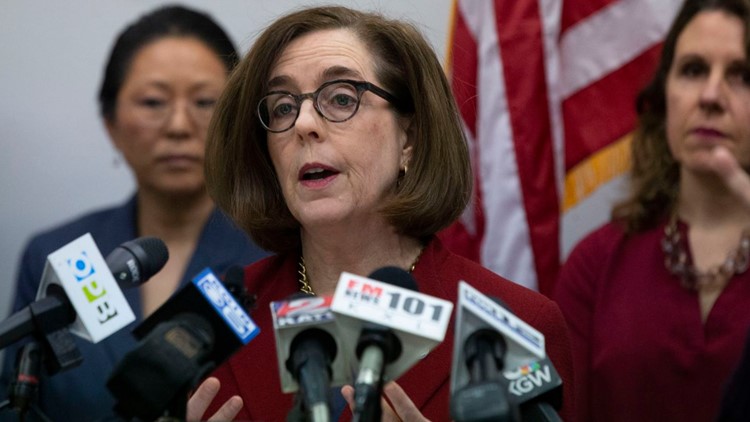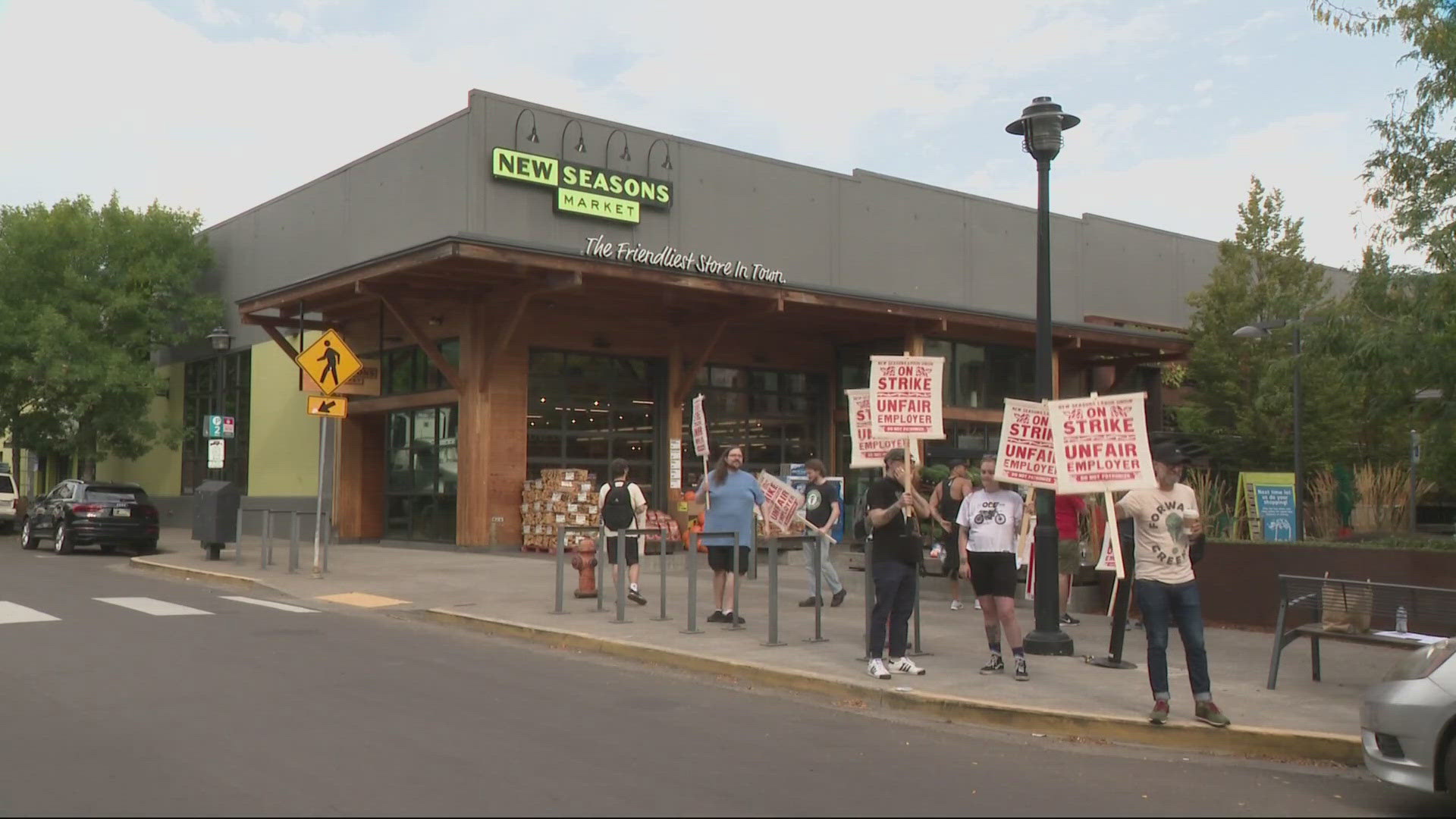PORTLAND, Ore. — Oregon health officials may need 600 more workers to perform coronavirus contact tracing under a plan being developed for Gov. Kate Brown’s “Reopening Oregon” framework.
The tracers would be largely tasked with performing time-consuming detective work to help slow the spread of coronavirus when Brown and counties begin lifting restrictions to restart sectors of the economy.
Brown expects to see a draft plan in the next couple of days for how many trackers the state must enlist to identify people exposed to known COVID-19 infections and then monitor them to make sure they get tested and follow quarantine guidelines.
“It’s very, very clear that we need a much more robust public health strategy around contact tracing, around testing and around isolating and quarantine,” Brown said Thursday during a conference call with reporters.
Much remains unknown about the plan and how it would better protect Oregonians from coronavirus in the months ahead. State and public health officials attempted to perform contact tracing after the pandemic officially arrived Feb. 28 in Oregon but quickly became overwhelmed by the volume of new infections.
National health experts see increased testing to detect the coronavirus and thorough contact tracing as the country’s best bet to reopen shuttered businesses. In Oregon, Brown announced stay-at-home restrictions March 23.
The need for 600 tracers is the latest estimate in what has been a moving target for the past two weeks.
Brown’s chief of staff, Nik Blosser, said last week that Oregon would need between 100 to 150 tracers and possibly more. But lawmakers were told a far higher number of 600 this week.
State Sen. Michael Dembrow, a Portland Democrat, wrote in a newsletter to constituents Monday that “over the next few weeks, around 600 people will be hired to take this questioning to the next level.” He apparently gleaned that number from Patrick Allen, director of the Oregon Health Authority, during a conference call earlier in the day.
Jonathan Modie, a spokesman for the health authority, confirmed in a statement the estimated need for workforce and training staff of “an estimated 600 additional personnel.” Those workers would perform contact tracing, specimen collection and help link people who are under isolation or quarantine to support services.
Modie declined to say how officials arrived at that number or whether the tracers would be hired by the state or individual counties, how much they would cost or where the money would come from to pay their salaries.
Modie said the health authority does not know how many contact tracers were available at the outset of the outbreak. There’s at least 100 now, according to Robb Cowie, a health authority spokesman.
Tracers would interview infected Oregonians to determine who they may have exposed to the virus through contact. After identifying that next rung of at-risk Oregonians, tracers would contact those people to let them know about their risk of infection, test them and advise them to stay home for 14 day from the date of exposure to prevent the spread to others.
Each new identified infection would lead to more tracing.
Coronavirus has dwarfed other communicable diseases that typically trigger the containment practice.
The biggest outbreaks in Oregon until now have typically involved fewer than 600 cases in an entire year. Public health officials have already identified 2,127 coronavirus infections through Thursday – and that represents only a fraction of the state’s true number of cases.
Oregon’s most populous county is looking to significantly ramp up staffing as part of the statewide tracking effort. The Multnomah County health department began with seven contact tracers but now envisions a workforce of 100 to 200, some who will provide support services to affected families rather than focus solely on identifying potential infections.
An unknown number will be new hires, others will be redeployed county workers and some will be volunteers, said Kim Toevs, director of communicable diseases for Multnomah County.
County officials hope to increase staffing within about a month, she said.
Oregon’s relatively low infection rate so far – with coronavirus found in only one out of every 20 residents tested – may make it easier to launch back into aggressive contact tracing when state and county officials look to reopen.
“The faster you can identify people, the more people you can identify, the longer you have until you fall back to population-wide interventions that are much more burdensome,” said Eric Lofgren, an assistant professor and infectious disease epidemiologist at Washington State University.
Health officials want to be prepared for waves of coronavirus resurgence that are expected to follow the incremental return to some daily routines.
“Contact tracing will tell you when things are starting to get out of hand,” Lofgren said. “When the first person shows up sick who hasn’t been in contact tracing, that’s a bad sign. That means there are chains of infection you can’t see.”
Effective contact tracing will be dependent on the availability of tests. Hospital systems have helped grow the state’s testing capacity over the past month, even though those gains aren’t reflected in the total number of tests reported on a daily basis by the state.
Oregon now has a daily capacity to test 3,000 Oregonians per day, said Dr. Dana Hargunani, the state’s chief medical officer. But much of that capacity is being unused.
The health authority has reported test results for about 1,300 Oregonians a day, on average, in recent weeks. That suggests more people identified through contact tracing – formally called persons under monitoring – could be tested when Oregon launches its new strategy.
Some businesses and rural counties are eager to ease stay-at-home restrictions, with Brown expected to release details of her testing and tracing plans the week of May 4.
Polk County Commissioner Craig Pope said his community would like to reopen as soon as possible. He facetiously suggested during a call with other regional leaders last week that the board could be ready to vote as early as this Friday to ask Brown to reopen the county.
Polk County has identified one death and 33 infections out of 633 residents tested.
That aggressive reopening timeline was met with resistance from a state employee, who reports to Brown’s office and was on the call.
“She said, ‘Whoa, whoa, we’re not ready for that,’” Pope recalled.
The reason he was given, among others: Oregon needs to get its contact tracers in place, first.
Reporter Rob Davis contributed to this report.
-- Brad Schmidt; bschmidt@oregonian.com; 503-294-7628; @_brad_schmidt
This article was originally published by The Oregonian/OregonLive, one of more than a dozen news organizations throughout the state sharing their coverage of the novel coronavirus outbreak to help inform Oregonians about this evolving health issue.



